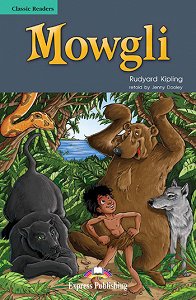In this article, we explore ways to teach literature in our ESL class and we combine the topic with new teaching frameworks and approaches. Our objective? To create lessons that inspire, set role models, and develop language skills in an organic, immersive way.
Literature in the ESL class #1: the Six Thinking Hats
Applicable to any class level, the Six Thinking Hats highlight the different perspectives we should adopt when we approach an issue.
The Six Thinking Hats approach is ideal when teaching literature in the ESL classroom. Students should pick one hat, ‘wear’ it, and act according to its traits. This is particularly useful, as it helps learners understand the story's characters and voice their perspective, improvise alternative endings, and understand intentions. Here are the hats and, consequently, the roles that each student can assume:
Blue Hat: Which hat should go on and off?, Was there any message or moral in the story? How did the author get you involved in the story?, What did the author do to engage you?
White Hat: What is the title, the author’s name, the year of publication, and the setting? What happened? Who are the characters, what do they look like, and what are their traits?
Red Hat: How did the book make you feel?, How did you feel when the character did…? How did the ending make you feel?
Yellow Hat: What was the advantage of solving the problem that way?, What are the advantages of…?, What are all the good points about…the character, the setting, the ending etc.?
Black Hat: What are the dangers involved in visiting/going to …?, What are the disadvantages in trying to solve problems that way?, When (characters’ names) did (a certain action), what problems did they encounter?
Green Hat: Write a new ending, Draw new illustrations, Think of a different way to solve a central problem.
Literature in the ESL class #2: Empathy mapping
Empathy mapping challenges students to walk in someone else’s shoes.
For this reason, empathy maps can be quite an immersive experience when working on readers or real events through CLIL approaches. Before you start, ask students to work together and brainstorm on what a character might say, think, do, and feel about a particular situation. To follow up, hold an open-class discussion to comment on their ideas and thoughts.
Through empathy mapping, students are encouraged to put themselves into someone else's shoes and consider their feelings, thoughts, and perspectives. [/caption]
Learning a language goes beyond grammar & vocabulary! Find out ways to teach English proverbs with the help of our lesson plan.
Literature in the ESL class #3: Design Thinking
In almost every work of literature, the central character sooner or later encounters a challenge.
In the Level 2 (CEFR Level A2) reader Around the World in 80 Days, Phileas Fogg and his crew are caught in a gale;
In the War of Worlds (CEFR Level B2), the narrator of the story hides in the ruins of a house and has to come up with a solution to save himself from a Martian attack;
Alice, in her adventures in Wonderland, similarly faces obstacles that she needs to overcome:
The rabbit ran around a corner. Alice followed, but when she turned the corner the rabbit wasn’t there. Alice was in a long, low room with doors all around it. She tried to open the doors, but they were all locked.
“What am I going to do now?” she thought.
“How am I going to get out of here?”
Design Thinking micro-activities are an ideal choice when you want to work on problem-solving or creative thinking but your class time restraints you. Ask your students to come up with ideas that could help the heroes and heroines of the stories overcome the challenges presented to them and foster a can-do mindset early on.
.png)





![[Level 4] Fleecy Sheep Goes On - Student's Book (with DigiBooks App)](https://cdn.expresspublishing.co.uk/images/styles/medium/9781399210706.jpg)







